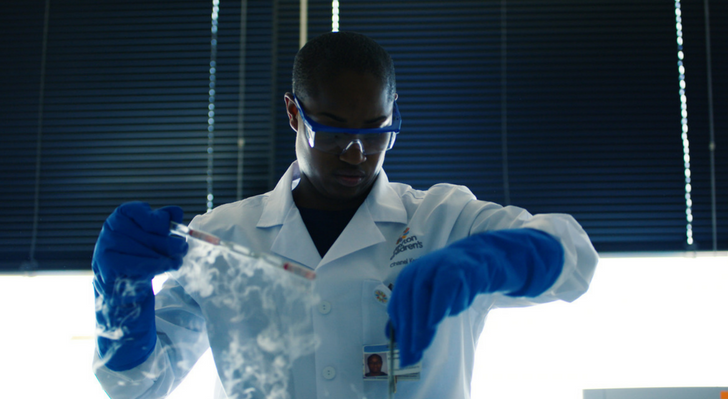9/10/18 news article
this is how we will find a cure for brain cancer
Dayton Children’s joins with Children’s Brain Tumor Tissue Consortium to launch first-of-its-kind Pediatric Brain Tumor Atlas
Today the fight to cure cancer took a giant leap forward with the launch of the Pediatric Brain Tumor Atlas (PBTA) – and Dayton Children’s is proud to be a member of this initiative.
The PBTA is one of the world’s most comprehensive collections of childhood brain tumor data now available to all researchers worldwide for free. Created by a group of 16 primary member institutions across the globe called the Children’s Brain Tumor Tissue Consortium (CBTTC), this initiative will provide samples and previously unimaginable amounts of data about childhood brain tumors in one place. This will allow researchers to spend less time tracking down the data they need, and spend more time focused on discovery of treatments and trials.

learn about Dayton Children's tissue biobank and the collaboration with the Children's Brain Tumor Tissue Consortium.
Brain tumors are the leading cause of disease-related death in children. Even so, little progress has been made in finding a cure. Doctors still can’t say what causes many of these tumors. Therapies to treat them haven’t changed much in decades. Many tumors don’t respond to chemotherapy and the other available treatments can have side effects that cause life-long damage.
Work to change that has been slow. Researchers trying to understand brain tumors have a very limited amount of material. Tumors removed from a child and frozen for research lose information during that process. In addition, there is a finite amount of that tumor so very few researchers can get their hands on a sample to study.
“We decided to do something different at Dayton Children’s,” says Robert Lober, MD, PhD, neurosurgeon and brain tumor researcher at Dayton Children’s Hospital. “We decided to make a living biobank. The tumors that we remove from children are grown in a dish so that one tumor can be propagated into 100 tumors or more. That tumor can be shared with researchers all over the world, again and again. In addition, cloud technology has allowed us to link it with massive amounts of data from the donor, clinical and imaging features, giving researchers more information to work with.”
“This consortium takes the work being done here and increases the depth and breadth of it by combining it with similar work from more than a dozen satellite member locations,” says Adam Mezoff, MD, FAAP, AGAF, chief medical officer at Dayton Children’s. “They share the vision of providing these tumors to people who need them, without restricting them in any way, which can sometimes happen. The collaboration is the key.”
The dataset available in the Pediatric Brain Tumor Atlas represent data collected from more than 1,000 subjects and 30 unique brain tumor types. That number will continue to grow. “We have about 20 tumors here at Dayton Children’s that are part of this data set,” says Dr. Lober. “That is a huge boost because just growing them and banking them does nothing until you get them in the hands of the researchers who need them. This is how you are going to get a cure for brain cancer.”
The Gala of Hope Foundation provided the seed money to get this project started at Dayton Children's. “A year or so ago, nothing like this existed,” says Dr. Lober. “Collaboration with institutions on a global stage, amazing advances in technology, the generosity, love and support from the people of Dayton who believe in and funded this mission and the families who want some good to come out of their child’s struggle with a brain tumor – they all made this happen.”
Blake Barr is one of those kids. In July 2016, he started having headaches and double vision. When he came to Dayton Children’s, doctors found he had a very rare tumor the size of a softball in his head that grew in the space of just a few months. His family was one of the first to donate to Dr. Lober’s tissue biobank.
“I will never forget looking at that image – something inside of Blake that should never be inside a child,” says Amberly, his mom. “Donating it to science creates a sense of comfort that it doesn’t stop here. We are gaining understanding to prevent and stop childhood cancer and brain tumors. It creates hope for a whole bunch of families.”
“It feels amazing that I survived something that not many other people can,” says Blake. “It will be even more amazing when we can figure out what’s causing it. Then we can stop it.”




